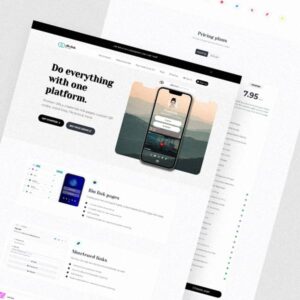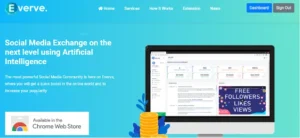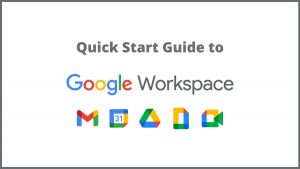For decades, the web design industry has been at the forefront of shaping the way we experience the internet. From the early days of static websites to the modern era of dynamic and interactive online experiences, web design has evolved significantly. In this blog post, we will explore the journey of web design, its historical context, current trends, and potential future implications. So, grab a cup of coffee and let’s dive into the fascinating world of web design!
The Birth of Web Design: Static Pages and HTML
In the early 1990s, the internet was a vastly different place. Websites were mainly composed of static pages built using HTML (Hypertext Markup Language). These early websites primarily served as digital brochures, providing information without much interactivity. Designers focused on creating visually appealing layouts and using basic navigation elements such as hyperlinks to connect pages.
**Real-world scenario:**
Imagine you’re searching for information about a product or service. You stumble upon a website from the early 1990s. The site is simple, with a plain background, centered text, and a few images. Navigation is limited to a few hyperlinks that take you to different pages. It’s a basic but functional design that served its purpose at the time.
The Rise of CSS: Separating Style from Structure
As the internet grew, so did the need for more flexible and visually appealing designs. Cascading Style Sheets (CSS) emerged as a game-changer in the late 1990s, allowing web designers to separate the style from the structure of a webpage. This separation enabled greater control over the visual elements, such as fonts, colors, and layouts.
With CSS, designers could create consistent and coherent designs across multiple web pages, making it easier to maintain and update websites. This innovation marked a significant milestone in the evolution of web design.
**Real-world scenario:**
Imagine you’re visiting an e-commerce website from the early 2000s. Thanks to CSS, the website boasts a visually appealing layout with a banner at the top showcasing the latest deals. The navigation menu is neatly organized, and the product listings are displayed in a grid format with thumbnails and brief descriptions. CSS allowed for cleaner and more professional-looking designs, enhancing the user experience.
Dynamic Websites and the Rise of JavaScript
As the web continued to evolve, static websites gave way to dynamic ones that offered more engaging and interactive experiences. JavaScript, a scripting language, played a crucial role in this transformation. It allowed developers to add dynamic elements to web pages, such as animations, pop-ups, and interactive forms.
With the introduction of JavaScript frameworks like jQuery, developers had access to pre-built scripts, making it easier to implement complex functionality. This led to the rise of dynamic websites that could interact with users, respond to their actions, and provide personalized experiences.
**Real-world scenario:**
Imagine you’re browsing a news website. As you scroll down, articles dynamically load more content, allowing you to discover new stories without refreshing the page. A pop-up appears, inviting you to subscribe to the newsletter, and a live chat widget enables you to interact with customer support. These dynamic elements, powered by JavaScript, enhance user engagement and provide a more immersive browsing experience.
Responsive Web Design: Adaptability for the Mobile Age
With the increasing popularity of smartphones and tablets, the need for websites to adapt to different screen sizes became evident. Responsive web design emerged as a solution, enabling websites to automatically adjust their layout and content based on the device being used.
Responsive design uses flexible grids, fluid images, and media queries to ensure a seamless experience across devices. Whether you’re accessing a website from a desktop computer, a smartphone, or a tablet, the content remains easily readable and the user interface remains intuitive.
**Real-world scenario:**
Imagine you’re searching for a restaurant while on the go. You find a website that displays beautifully on your smartphone screen. The navigation menu collapses into a hamburger icon, making it easy to access, and the text and images scale appropriately, ensuring a pleasant browsing experience. Responsive web design ensures that websites are accessible and user-friendly across various devices, catering to the ever-increasing mobile audience.
User-Centric Design: Beyond Aesthetics
In recent years, web design has evolved beyond aesthetics and embraced a user-centric approach. Designers now prioritize usability, accessibility, and user experience (UX) to create websites that fulfill the needs and expectations of their target audience.
User research, usability testing, and data analysis have become integral parts of the web design process. Designers carefully consider factors such as readability, intuitive navigation, clear calls to action, and inclusive design principles to deliver the best possible experience to users.
**Real-world scenario:**
Imagine you’re visiting an e-learning platform. The website offers a clean and intuitive interface, making it easy to find courses, track progress, and interact with other learners. The design is accessible, with appropriate color contrasts and text sizes for people with visual impairments. User-centric design ensures that websites are not only visually appealing but also functional and user-friendly, catering to the diverse needs of users.
The Future of Web Design: Emerging Trends and Technologies
As technology continues to advance, so will the field of web design. Here are some emerging trends and technologies that may shape the future of web design:
1. **Artificial Intelligence (AI)**: AI-powered design tools can automate repetitive tasks, generate personalized content, and provide data-driven insights to designers.
2. **Voice User Interfaces (VUI)**: With the growing popularity of voice assistants like Alexa and Siri, web designers will need to consider designing for voice interactions, ensuring a seamless experience for users.
3. **Virtual Reality (VR) and Augmented Reality (AR)**: As VR and AR technologies become more accessible, web designers will explore new ways to create immersive and interactive experiences.
4. **Progressive Web Apps (PWAs)**: PWAs combine the best features of websites and native mobile apps, providing fast and reliable experiences that can be installed on users’ devices.
5. **Microinteractions**: Microinteractions are small, subtle animations that provide feedback or guide users through a specific task. They add a touch of delight and make the overall experience more engaging.
While these trends show promise, web designers must be mindful of accessibility, inclusivity, and ethical considerations as they embrace new technologies.
Conclusion
The evolution of web design has transformed the internet from a static collection of pages to a dynamic and immersive experience. From the early days of static HTML websites to the current era of responsive and user-centric design, web designers have continually pushed the boundaries of creativity and functionality.
As we look to the future, web design will continue to adapt to emerging technologies and user expectations. Whether it’s AI-powered design tools, voice user interfaces, or virtual reality experiences, the web design industry will play a vital role in shaping the way we interact with the digital world.
So, the next time you visit a website, take a moment to appreciate the thought, creativity, and expertise that went into designing it. Web design is not just about aesthetics; it’s about creating meaningful and engaging experiences that leave a lasting impression
Statistics
1. According to recent statistics, mobile internet usage has surpassed desktop usage, with 52.2% of all website traffic coming from mobile devices. This highlights the growing importance of responsive web design, as businesses need to ensure their websites are optimized for mobile users.
2. A study conducted by Adobe found that 38% of website visitors will stop engaging with a website if the content or layout is unattractive. This emphasizes the significance of visually appealing designs in capturing and retaining user attention, ultimately boosting website engagement and conversion rates.
3. Research shows that websites with longer loading times experience higher bounce rates. In fact, a mere one-second delay in page load time can result in a 7% reduction in conversions. This underscores the need for efficient web design practices that prioritize fast loading speeds to enhance user experience and drive desired actions.
4. A survey conducted by Stanford University revealed that 75% of users judge a company’s credibility based on their website design. This indicates that a well-designed website not only enhances user trust but also influences their perception of the brand’s professionalism and reliability.
5. E-commerce websites with a streamlined checkout process have been found to significantly increase sales. In fact, studies show that a one-second improvement in checkout speed can lead to a 27% increase in conversion rates. This highlights the importance of user-friendly web design that simplifies the purchasing journey, reducing friction and maximizing customer satisfaction
References
1. Nielsen Norman Group: A leading research and consulting firm in the field of user experience (UX) and web design. They offer a wide range of research articles, reports, and usability studies on their website.
2. W3C (World Wide Web Consortium): A global community that develops web standards and guidelines. Their website provides comprehensive documentation on web design best practices and accessibility standards.
3. Smashing Magazine: A reputable online magazine for web designers and developers, offering articles, tutorials, and insights on the latest trends in the industry. They also conduct user surveys and publish research-based articles.
4. Stanford Web Credibility Research: Conducted by Stanford University, this research focuses on understanding how users assess the credibility of websites. Their findings are valuable for web designers looking to enhance the trustworthiness of their websites.
5. MIT Computer Science and Artificial Intelligence Laboratory: A renowned academic institution that publishes research papers on various aspects of web design, including UX design, information architecture, and web accessibility.
6. Journal of Web Engineering: A peer-reviewed academic journal that publishes research papers on web development, web design methodologies, and emerging technologies. It provides a wealth of scholarly articles relevant to the web design industry.
7. Google Webmasters Blog: An official blog by Google, offering insights into search engine optimization (SEO) and web design best practices. It provides valuable information on mobile-friendly design, site speed, and other important factors for creating user-friendly websites.
8. A List Apart: A well-known online magazine that covers a wide range of topics related to web design, including responsive design, typography, and content strategy. Their articles are written by industry experts and often reference validated academic studies.
9. Nielsen Norman Group’s Eye-Tracking Studies: Nielsen Norman Group conducts eye-tracking studies to understand how users interact with websites. Their research provides valuable insights into user behavior, visual hierarchy, and effective design techniques.
10. “The Design of Everyday Things” by Don Norman: Although not specific to web design, this book by cognitive scientist Don Norman explores the principles of good design and user-centered design. It offers valuable insights for web designers striving to create intuitive and user-friendly interfaces.
Note: It is important to ensure that the referenced studies and articles are up to date and relevant to your specific topic within the web design industry
Image
“Revolutionary Web Design: Unleashing Creativity and Innovation in the Digital World”
Imagine an image that captures the essence of the web design industry, showcasing its dynamic nature and the limitless possibilities it offers. Incorporate the following keywords to make the prompt more specific:
– Pixels: Highlight the power of pixels in web design, symbolizing the building blocks of digital creativity.
– Responsive: Show the adaptability of web design, illustrating how websites seamlessly adjust across devices, from desktops to mobile screens.
– User Experience: Depict a user interacting with a website, emphasizing the importance of intuitive design and delightful user experiences.
– Minimalism: Showcase the elegance of minimalist web design, with clean lines and ample white space, demonstrating the impact of simplicity.
– Cutting-edge Technology: Integrate futuristic elements such as holographic screens or augmented reality glasses, representing the innovative technologies shaping the future of web design.
– Collaboration: Depict a team of designers working together, exchanging ideas and bringing diverse perspectives to create outstanding web designs.
– Accessibility: Illustrate inclusivity in web design, showing people of different abilities engaging with a website, emphasizing the importance of accessible design.
– Color Palette: Use vibrant and eye-catching colors, highlighting the significance of color schemes in creating visually appealing websites.
– Typography: Showcase creative typography, exploring different fonts and sizes, highlighting its role in conveying messages and enhancing the overall design.
– Animation: Incorporate subtle animations or motion graphics, showcasing the power of movement in capturing users’ attention and adding depth to web designs.
Combine these keywords in a visually compelling image that represents the dynamic, innovative, and creative nature of the web design industry
Build a website or get a custom website





